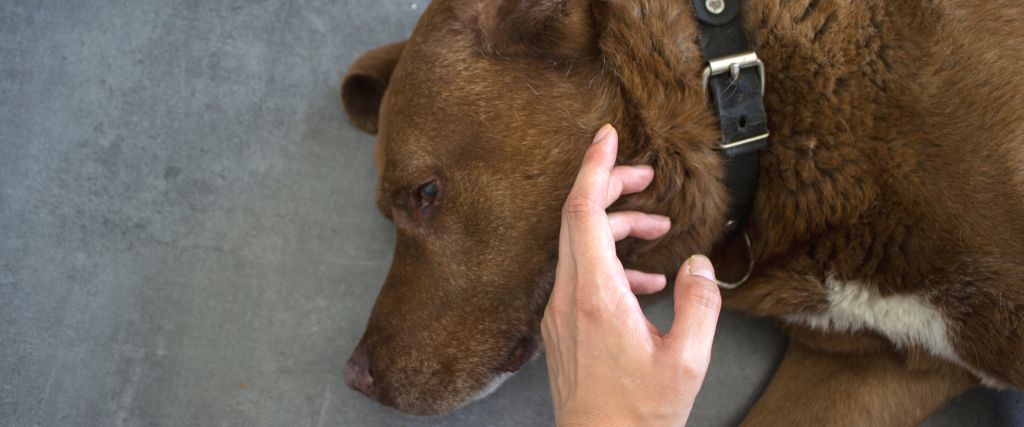Not every pet parent will encounter the frightening moment of witnessing a seizure in their furry friend, but for those who do, it can be downright terrifying. Today, we're diving deep into the world of seizures in both cats and dogs. We'll explore the different types of seizures your pet could experience, guide you through the crucial steps to take if your pet does have a seizure, and discuss potential treatments to help manage this medical condition. So, let's equip ourselves with the knowledge to provide the best care for our four-legged family members!
Grand Mal Seizures
When most people think of seizures, they think of what is called a Grand Mal seizure, where the animal is convulsing on the ground with stiffness/contraction cycles (tonic/clonic action), paddling, defecating, urinating, etc. These seizures are scary but not the only type of seizure that your pet can have. There are two other classifications of seizures that owners don’t always recognize. The two other types of seizures are partial seizures and psychomotor seizures.
Partial Seizures
Partial seizures are where the seizure activity originates from one specific part of the brain and, therefore only affects a certain area of the body. For example, this type of seizure may present itself as twitching, excessive blinking, etc. Partial seizures can progress to Grand Mal seizures.
Psychomotor Seizures
Psychomotor seizures often appear as behavioral abnormalities. This type of seizure can present itself as involuntary circling, howling, snapping, etc. This behavior may be followed by a Grand Mal seizure.

When speaking to your veterinarian about seizure-like behavior, they may ask what happened after the seizure. The time after a seizure occurs is called the post-ictal phase. This phase helps veterinarians distinguish between a true seizure or some type of cardiovascular event or fainting. The post-ictal phase can last from a few minutes to several hours. During this time, your pet will be experiencing disorientation and sometimes appear to be blind. The post-ictal phase can be even more disturbing than the seizure itself to a pet owner. During this time, owners need to be very careful. Naturally, as a pet owner, our first thought after seeing a pet have a seizure is to comfort them, but as animals come out of seizures and are disorientated, they will not recognize the people they love. This is often when owners get bitten or scratched.
So Why Do Seizures Happen?
Sometimes seizures occur due to an infection in the animal’s brain (more common in animals less than a year old), sometimes the underlying cause is not known, and these animals are labeled as epileptics (usually animals between 1-5 years of age), and other times it’s due to a tumor (common in animals over five years of age). Other causes can be due to toxins, trauma, hypothyroidism, etc. In animals over five, the most common cause of seizures is meningiomas which grow off the inside of the skull and press on the brain. These types of tumors are diagnosed with either an MRI or CT scan. Surgical removal is an option for some animals.
What Should You Do If You See Your Pet Having A Seizure?
If your pet is having a Grand Mal seizure, make sure your pet is in a safe place (i.e. not at the top of the stairs or on a piece of furniture where they could fall off of it), remove other animals and children from the area, and time the seizure. If the seizure lasts more than three minutes, you need to start cooling your pet down with ice packs or cold cloths on the ears and paw pads and seek immediate veterinary attention. Also, if your pet has more than two seizures in a 24-hour period (even if they are less than three minutes), you need to seek veterinary attention. If the seizure doesn’t last more than three minutes, then after the seizure is done, record the date and time of the seizure and note any abnormal behavior beforehand, such as twitching. After your pet’s seizure, the post-ictal stage will occur. Again, you need to be careful because you can get bitten during this phase, no matter how sweet your pet normally is.
If your pet has a seizure, you should notify your veterinarian so that a note can be made in your pet’s medical history. Your veterinarian may advise you to bring your pet in for a work-up. Try to record the date, time, and length of each seizure no matter how much time occurs between seizures since sometimes your doctor may be able to find patterns.

How Do You Treat Seizures?
Treatment of seizures varies with the patient. Many veterinarians will start by doing blood work to rule out underlying causes. If the blood work is normal, then depending on the age of the pet and the owner’s willingness, further diagnostics may be recommended. Based on the pet’s seizure history, medication may be started. The most common medications used are phenobarbital and potassium bromide. Your veterinarian will decide which is best for your pet. After your pet is started on medication, there is monitoring involved to make sure your pet is on the appropriate dose and not having any side effects from the medication.
Up to 30% of cats and dogs will not respond to traditional medications. There are other seizure medications available from the human side that can be used but are not commonly used due to excessive cost and inconvenient dosing schedules.
Dr. Catherine MacLean from Sugar River Animal Hospital notes, "One alternative that has worked for one of my patients has been acupuncture. Sadie Mae first started having Grand Mal seizures back in 2012 when she was two years old. Blood work ruled out any underlying abnormalities. The owners didn’t want to do medication, so they sought out acupuncture to treat Sadie Mae’s seizures. Sadie Mae has been seeing me since 2013 and we’ve done a very good job of managing her seizures with acupuncture alone. On average, Sadie Mae goes 7-9 months between seizures. When a seizure occurs, we treat Sadie Mae with acupuncture several times, and then she is good for another 7-9 months. The owners have been happy to not treat Sadie Mae with daily medication and Sadie Mae seems to really enjoy her sessions."
In the End
There is nothing fun about your pet having a seizure. The most important things to remember if your pet has a seizure are to keep your pet in a safe place, be careful you don’t get hurt, write down the seizure, and contact your veterinarian. Many animals that have seizures can be managed and live normal happy lives.
Don't have a vet in your area yet? We can help you find a local veterinarian.
This blog was first seen on Sugar River Animal Hospital.
